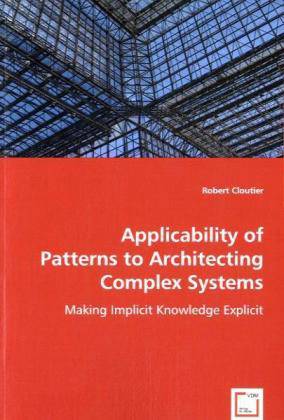
- Afhalen na 1 uur in een winkel met voorraad
- Gratis thuislevering in België vanaf € 30
- Ruim aanbod met 7 miljoen producten
- Afhalen na 1 uur in een winkel met voorraad
- Gratis thuislevering in België vanaf € 30
- Ruim aanbod met 7 miljoen producten
Zoeken
Applicability of Patterns to Architecting Complex Systems
Making Implicit Knowledge Explicit
Robert Cloutier
Paperback | Engels
€ 115,95
+ 231 punten
Omschrijving
The human mind perceives patterns without conscious thought. Today patterns are used in a number of engineering disciplines such as soft-ware engineering, requirements engineering and mechanical engi-neering, to name a few. However, the value and use of patterns in architecting and engineering complex systems has had very limited exploration. The purpose of this research is to focus on understanding the motivations for using patterns in architecting and engineering complex systems, and to understand whether patterns for this pur-pose have unique requirements. Developing the notion and utility of complex patterns for the systems engineering community, this research develops a framework for their documentation, classification, and management. This approach en-ables complex pattern use and reuse, evolution and improvement. By capturing intrinsic systems engineering knowledge and expertise, patterns allow the application of this knowledge by less experienced architects and systems engineers. The systems engineering community now has a vehicle to build a maturing source of patterns that can be leveraged to improve engineering effectiveness and efficiency.
Specificaties
Betrokkenen
- Auteur(s):
- Uitgeverij:
Inhoud
- Aantal bladzijden:
- 456
- Taal:
- Engels
Eigenschappen
- Productcode (EAN):
- 9783836485876
- Verschijningsdatum:
- 18/07/2008
- Uitvoering:
- Paperback
- Formaat:
- Trade paperback (VS)
- Afmetingen:
- 152 mm x 229 mm
- Gewicht:
- 603 g

Alleen bij Standaard Boekhandel
+ 231 punten op je klantenkaart van Standaard Boekhandel
Beoordelingen
We publiceren alleen reviews die voldoen aan de voorwaarden voor reviews. Bekijk onze voorwaarden voor reviews.








